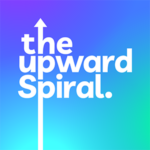We work with many different organisations on improving the role, impact and value of internal communications (IC). So as a regular feature we thought it would be a good idea to share some of the key findings we have uncovered through a combination of our IC audits and health-checks, our conversations with key clients and our observations of reports published by others. We call it The Inside Track and each month we will focus on one of today’s common IC challenges.
This is one of ten specialist internal comms blogs. Email Chris for exclusive access to the full collection before they're released.

Follow our LinkedIn page for the Upward Spiral newsletter, featuring new blogs and more.
When executed right employee newsletters can be an excellent tool for keeping your people informed, engaged and connected.
These newsletters are a key source of valuable information, company updates and a platform for recognising employee achievements. But why do they often fail? Generally, because no one knows why they exist. It might be a legacy initiative, or just a catchall for dumping content that is easy to populate, send and tick-off the to-do list. Sadly, if that is the case it’s also easy for employees to ignore and delete.
Here’s our guide to creating an effective and engaging newsletter:
Before you start crafting your newsletter, it’s important to define its role and purpose alongside other means of internal communication. Are you aiming to inform, engage, educate or entertain your employees? Having clear objectives will help guide the content, tone and structure of your newsletter.
Understanding your audience is crucial for creating relevant and engaging content. Work with key stakeholders to understand the demographics, topics of interests, and preferred device usage of your employees. This will enable you to tailor your content and design to meet their needs and ensure it resonates.
A well-planned content calendar is essential for consistency and variety. Include a mix of content types such as company news, employee spotlights, industry updates, hints and tips, and event announcements. A great opportunity to collaborate with other communicators in the organisation to help consolidate messaging.
A well-designed template will help the newsletter stand out in the inbox. Not only will it save you time going forward but it will also create a consistent look and feel that employees will recognise. Use a clean, uncluttered layout with consistent fonts, colours and branding. To help make more digestible try breaking up the text with subheadings, images and/or infographics.
Engaging content is key to keeping your readers interested. Try creating headlines that seek to grab attention and use a conversational tone written in a way that is relatable, understandable and easy to consume. Always consider the ‘what’s in it for me’ factor by including stories, quotes and testimonials to make the content more personal and engaging.
Traditional written articles still have a place in newsletters but you also now have the opportunity to distribute your content in many different formats such as embedding videos, podcasts, webinars and recorded events. For example, recording and pushing out a video of a town hall or message from the CEO or other members of the leadership team.
Encourage employees to interact with the newsletter by including interactive elements such as surveys, quick polls, quizzes and feedback forms. This not only makes the newsletter more engaging but also provides valuable insights into your most popular features, combined with employee opinions and preferences. You could also embed social features such as comments, ratings and likes.
Recognise and celebrate employee achievements and contributions. Feature employee and/or team spotlights, success stories, and awards. With the workforce of many organisations split between your office and their home this will help boost morale and create a sense of community regardless of where people work.
Before sending out your newsletter, test it on different devices and email small groups to ensure it looks good everywhere. Pay attention to load times, formatting issues, and readability. After sending, you can analyse open rates, click-through rates, and feedback to optimise future editions.
Try to be consistent when sending out your newsletter to help build anticipation, familiarity and trust. Whether it's weekly, bi-weekly or monthly stick to a regular schedule. Consistent delivery helps employees get into the habit of reading and engaging with the newsletter. However, do not fall into the trap of creating ill thought through content just to meet the deadline.
Conclusion
An effective newsletter can become an important cornerstone of your internal communication strategy. However, creating the best employee newsletter involves thoughtful planning, engaging content and consistent delivery. By defining your objectives, understanding your audience and following these key steps you can create a newsletter that will help to inform, engage and connect with your employees. It will not only keep everyone in the loop but will also help foster a positive, inclusive and cohesive culture.